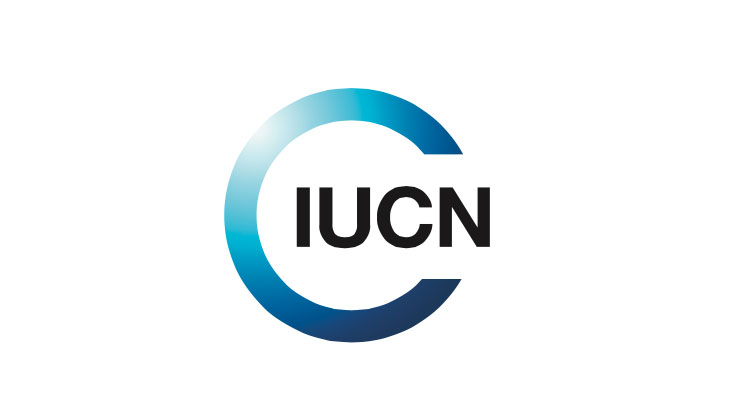
After years of guiding, outfitting and hosting outdoor programming, I've had ample opportunity to defend trophy hunting and the hunters' role in wildlife conservation, always surprised at how often poaching is confused with trophy hunting. So I was pleased to read the International Union for Conservation of Nature's (IUCN) April 2016 report, "Informing Decisions on Trophy Hunting," prepared for the European Parliament showcasing trophy hunting's indisputable positive impacts on conservation and animal welfare as decision-makers attempt to restrict the importation of all hunting trophies into the European Union (EU). The report cites in-depth research confirming what most hunters already know: Trophy hunting is the most effective way to save wildlife populations, particularly those in decline. It advises the EU to ensure any decisions restricting or ending trophy hunting are based on an analysis of trophy hunting's role in affected communities and are made only if other alternatives can deliver equal or greater conservation incentives.
The report's timing is ideal as the "Cecil the lion" issue raised the rhetoric of the animal rights extremists, who pounced on the opportunity to condemn hunters and advance their agenda. The result? Impulsive, emotional responses took center stage over objectivity and critical thinking. But now hunters have new tools to fight back, starting with this report, and the NRA.
As stated by Susan Recce, director of the NRA-ILA's Conservation, Wildlife and Natural Resources, "The report is astonishing in its scope and unbiased examination of the role of trophy hunting from conservation of the species to habitat protection, anti-poaching efforts and other programs in support of indigenous communities."
Neither of us were aware of any other such study promoting hunting's benefits outside of those of U.S. hunting organizations, with case studies from North America to Asia and Africa. "In response to attacks on trophy hunting," said Recce, "knee jerk decisions have occurred, such as U.S. airline companies refusing to transport trophies; adverse effects on species' conservation as a result of U.S. Fish and Wildlife Service (USFWS) listings; and negative articles from the uneducated regarding hunters' role in conservation."
Most American hunters realize the United States is the world's leading example of how wildlife species that were driven to the brink of extinction a century or more ago have fully recovered--thanks to hunters' dollars. "The United States has the most enlightened wildlife conservation programs in the world and has enshrined scientific wildlife management and the Public Trust Doctrine within the framework of the North American Model of Wildlife Management," said Recce.
With the NRA now taking center stage in fighting the culture war on hunters and hunting, I reached out to Melanie Pepper, co-chair of the NRA Hunters' Leadership Forum, who is heavily invested in these issues, which she has seen play out firsthand on hunts around the globe.
"After years of misinformation and direct attacks on hunters, it is refreshing to finally read an unbiased report on all of the effects of trophy hunting," she said. "I emphasize 'all' because finally the positive impacts are presented. "And all of this positive information in a report prepared for the European Union! There’s never been a more opportune time for NRA’s HLF to leverage off of this report and step up the fight against the HSUS, other anti-hunting organizations and the media."
Alongside Pepper, American hunters welcome how the IUCN report lists the major contributions of trophy hunting and reasoned, peer-reviewed facts supporting its benefit to local communities, to wildlife populations due to well-managed hunting concessions; and local government conservation efforts in light of a lack of economically-feasible funding alternatives. Particularly interesting is the report’s discussion about the contribution of non-hunting eco-tourism to wildlife conservation as compared to what hunting contributes.
The Truth About Trophy Hunting
Sharing findings from 10 case studies worldwide, first up is the case of trophy hunting's impact on rhinos in South Africa and Namibia. Fact: Trophy hunting has increased the white rhino population in South Africa from 1,800 (in 1968) to around 18,400; and black rhino increased in South Africa and Namibia from 2,520 (in 2004) to 3,500. By the end 2015, the two countries conserved 90 percent of Africa’s rhinos, yet only 0.34 percent and 0.05 percent of their white and black rhino populations, respectively, were hunted.
Other case studies include argali in Mongolia, bighorn sheep in North America and private wildlife lands and communal conservancies in Namibia. Fact: Without hunters' dollars, which also conserve threatened, non-hunted species such as Africa's wild dog, most conservancies could not even cover operating costs.
Several case studies covered issues I have followed or been involved in for years. For example, in South Africa, I regularly take archery hunters to a Big Five reserve where their fees help raise funds for badly needed anti-poaching teams and other wildlife-related projects. And the polar bear issue hit my radar over 20 years ago while on a muskox hunt in the Northwest Territories when Inuits arrived in the village with a large polar bear they'd taken as one of their quota that had not been sold to a trophy hunter as the U.S. Fish and Wildlife Service (USFWS) keeps polar bears on the Endangered Species list despite studies documenting sustainable populations. Not only has the move not saved even one bear as Inuit communities take every bear allowed on their quotas, but in the facer of USFWS arrogance the report cites revenue loss to Nunavut communities exceeding $840,000 annually. "And speaking of that," said Recce, "note what the report says about the negative effects of the USFWS listing the lion as threatened."
Report Summary
The IUCN report clarifies that managed trophy hunting increases the value of wildlife and their habitats, generates incentives for landowners to conserve and aids wildlife recovery. It is not poaching or "canned hunting" as the antis attest. While there are examples of corruption, excessive quotas, illegal hunting and poor monitoring in a number of countries that need reform, managed trophy hunting generates revenue and fund anti-poaching efforts while blanket bans exacerbate habitat loss and poaching.
Considering that conservation success is rarely achieved by single decisions in distant capitals, the IUCN will assist EU decision-makers in understanding trophy hunting's role.
The Bottom Line
"The IUCN report destroys all the myths, misinformation, fabrication, deceit--whatever we call it--that long has characterized trophy hunting as evil and harmful, if not destructive, of game populations, especially those in decline," concludes Recce. "What it shows, which the entire hunting community already knows, is that without sound wildlife management and well-regulated hunting, declining species will continue in that direction and no photo tours, wringing of hands or groups using iconic species to fundraise for their own benefit will reverse the downward spiral. Only hunters can make the difference in whether wildlife has a future on this planet."
No one could say it better as the must-read report sets the record straight. And in getting back to how trophy hunting is not poaching for the international illegal wildlife trade that is devastating species such as the African elephant and rhinos, the report underscores that trophy hunting is a legal, regulated activity that provides community benefits and funds law enforcement. But, again, we hunters already knew that.
To read the full IUCN report, click here.
About the IUCN
The International Union for Conservation of Nature (IUCN)--and its nearly 1,300 government and NGO members--works to conserve nature and establish effective governance of its use through scientific research. It brings governments, NGOs, the United Nations and companies together to develop the practices, policies and laws.



































